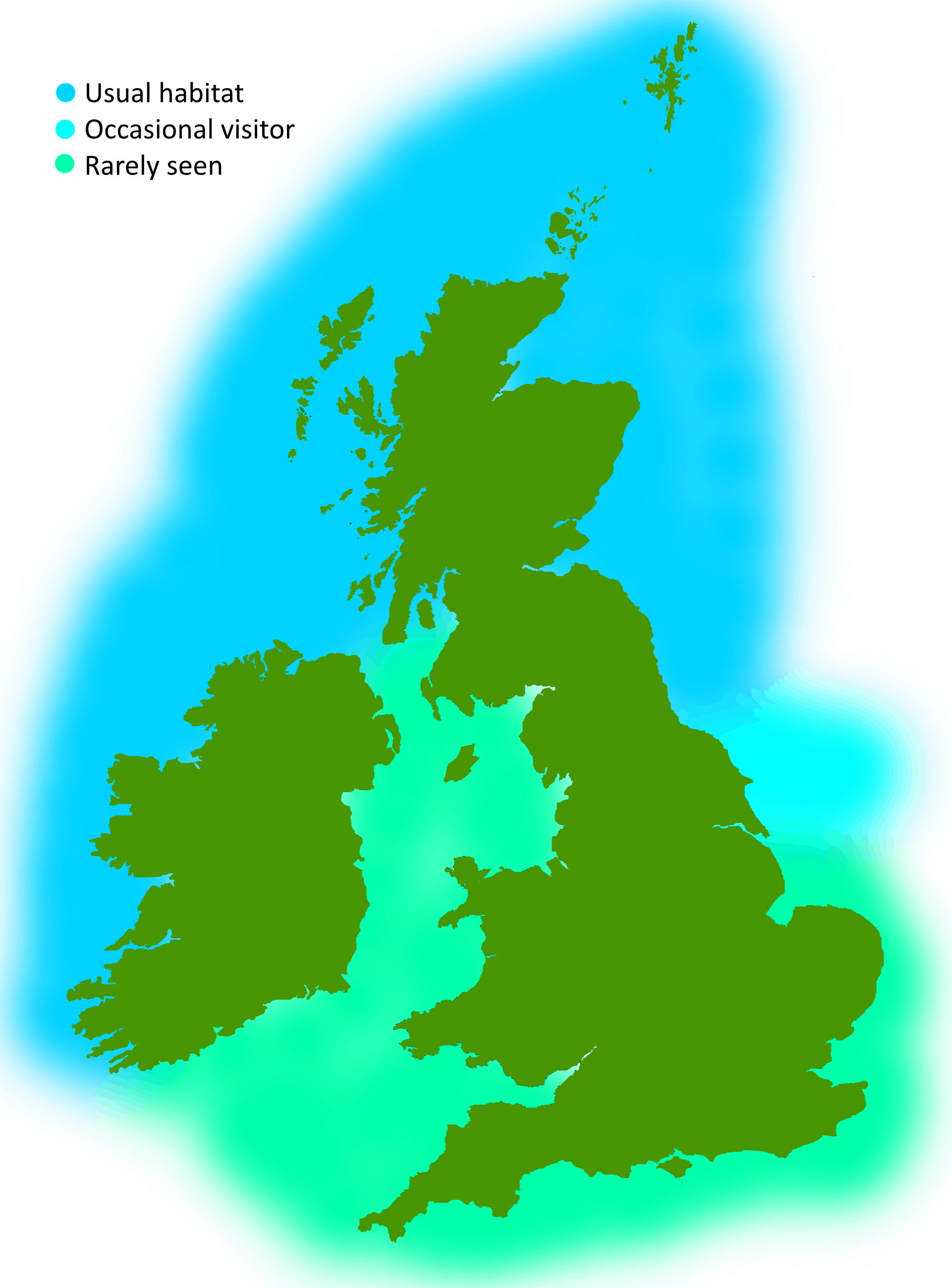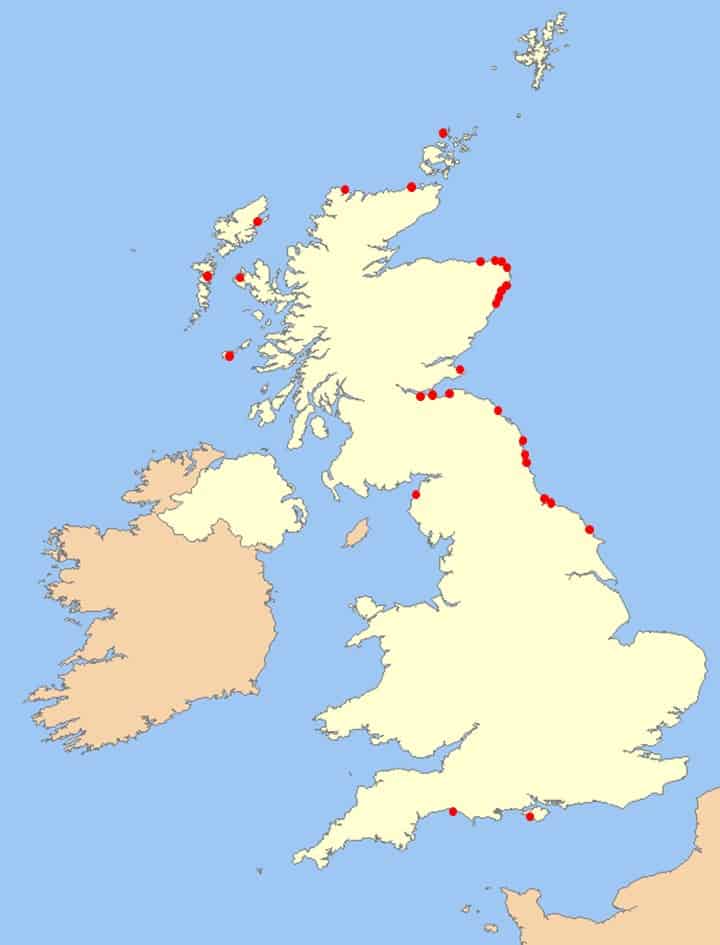
A pelagic species measuring up to 3.1 metres in length. Back is dark grey/black, belly white/light grey, with light grey/white patches/stripes on sides, in front of dorsal fin and over back and tail stock behind dorsal fin, with a stubby ‘beak’, which is usually white in colour.
White-beaked dolphins’ calves are born in summer and early autumn, measuring 1.2 to 1.6 metres. The species is found in variable sized groups (most commonly less than 100) and feeds primarily on herring, sprats, cod and whiting, but will also take squid and crustaceans.
This species is found mainly off Scotland and the Atlantic seaboard of Britain and Ireland and in the northern and central North Sea. A small, possibly isolated, population exists in the English Channel between Devon and Hampshire and is undergoing further study.

White beaked dolphins, being mainly a cold water species, are mainly stranded around Scottish and northern North Sea coastlines.

A whale, dolphin or porpoise stranded on the beach is obviously not a usual phenomenon. These animals do not beach themselves under normal circumstances, and they will require assistance. Please DO NOT return them to the sea as they may need treatment and or a period of recovery before they are fit enough to swim strongly.
BDMLR RESCUE HOTLINE:
01825 765546 (24hr)
or
RSPCA hotline (England & Wales): 0300 1234 999
SSPCA hotline (Scotland): 03000 999 999
You will receive further advice over the phone, but important things you can do to help are:
If you find a dead cetacean
The Cetacean Strandings Investigation Programme (CSIP) collects a wide range of data on each stranding found on English and Welsh shores, whilst the Scottish Marine Animal Strandings Scheme (SMASS) does the same for Scotland. If you discover a dead animal, please contact the relevant hotline and give a description of the following where possible:
Digital images are extremely helpful to identify to species, as well as ascertaining whether the body may be suitable for post-mortem examination.
CSIP has produced a useful leaflet that can be downloaded by clicking here.
CSIP hotline (England and Wales): 0800 6520333.
SMASS hotline (Scotland): 07979245893.